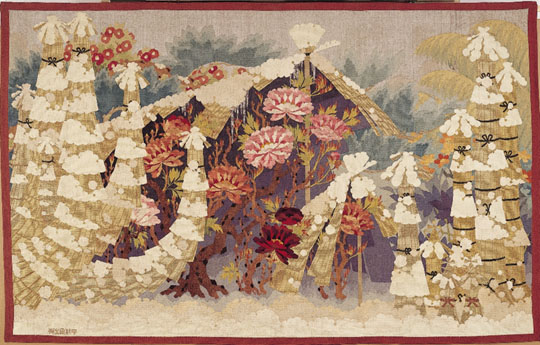East Asian flower-and-bird painting emerged as a genre in China around the 8th century and the tradition has survived through to the present. Its resonances for modern and contemporary Japanese artists are currently the theme of two very different exhibitions: "By the Water-lily Pond" at the Asahi Beer Oyamazaki Villa Museum of Art and "From One Flower to Another" at the Kyoto Municipal Museum of Art.
"By the Water-lily Pond" comprises a group of late water-lily paintings by French Impressionist Claude Monet (1840-1926), painted wooden sculptures by Yoshihiro Suda (b. 1969) and embroidered panels by Zon Ito (b. 1971). All of the works take their genesis from water lilies, in Zon Ito's case from their leaves. The exhibition is provocative because while the subject for the three artists' is the same, the works differ radically.
Suda carves lifelike plant sculptures from magnolia wood, colors them with traditional Japanese painting pigments and arranges them in installations. His works often draw on Buddhism, and his central exhibit here, "Sleeping Lotus" (2002), continues the theme. The lotus, a symbol introduced to Japan from India via China, is often used in Buddhist art and architecture. The story goes that one grew from Vishnu's navel along with Brahma who created the universe. The iconography subsequently became the symbol of the Pure Land of Amida Buddha.



















With your current subscription plan you can comment on stories. However, before writing your first comment, please create a display name in the Profile section of your subscriber account page.